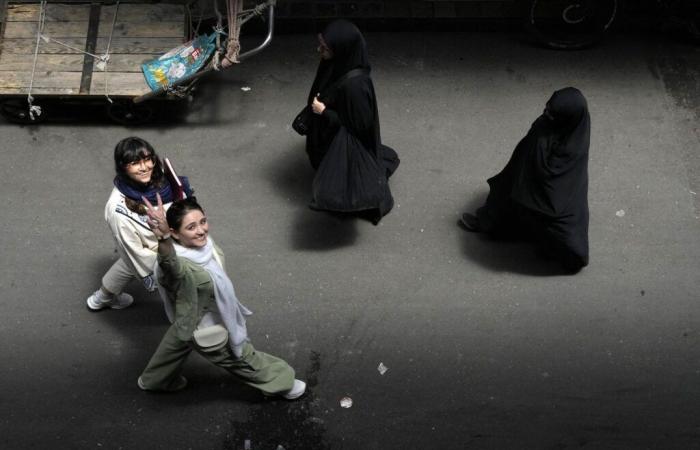Iran tirelessly continues its efforts to force women to respect the compulsory wearing of the hijab. On November 12, the director of the women’s affairs department within the Office for the Promotion of Virtue and Prevention of Vice in Tehran announced the creation of a “treatment clinic” for Iranian women who refuse the Islamic veil. Talebi Darastani said the facility aims to scientifically and psychologically address self-disclosure, particularly among adolescent girls and young adults. She also said the clinic would help them in their quest for Islamic identity.
“The hijab and the way women dress has nothing to do with their mental health. It’s a personal choice.” protests Roshanak, a 31-year-old painter. “It is shocking how much the government hates women. He implements crazy ideas like these, denounces this feminist. Its sole purpose is to intimidate them and continue to oppress them, by forcefully injecting its ideology into the heads of each resident. »
“Staying silent won’t bring change”
The creation of this clinic was announced ten days after the arrest of Ahou Daryaei, a student at Azad University in Tehran. After an altercation with campus security and Basijs (militiamen of the Revolutionary Guards, Editor’s note) regarding her clothing, the young woman had decided, in a moment of anger, to undress and cross the university grounds in her underwear.
This affair sparked a public outcry, with Ahou Daryaei becoming a new symbol of women’s resistance to the hijab. According to state-affiliated media, she was then transferred to a psychiatric hospital. Amir Mahjoob, director of public relations at the university, described it as a “girl suffering from psychological disorders”. On November 19, Iranian justice assured that Ahou Daryaei would not be targeted by any legal proceedings and that ” sick “, she had been “handed over to his family”.
At the beginning of November, another tragedy shocked the Iranians: Arezou Khavari, a 16-year-old Afghan girl living in the south of Tehran, committed suicide after having suffered, because of her hijab, threats and serious psychological pressure from the from his school officials.
Sad and angry at these two events, Roshanak does not hide a certain disappointment. Like many, she hoped that Iranian women would suffer less suffering after the “Woman, Life, Freedom” movement: “Women’s silence and patience do not mitigate offensive behavior or unjust laws; on the contrary, they extend and perpetuate them, deplores the painter. Young Iranian women today understand that remaining silent in the face of coercion, from the government or from a father, will not bring change. »
Non-wearing of the veil assimilated to nudity
Student and activist in Isfahan, Neda Kavianpour sees every day that the moral police, whose presence had diminished during “Woman, Life, Freedom”, have returned to the streets to intimidate women. A bill on chastity and the hijab was also approved at the end of September, thanks to the support of government representatives and their allies.
This text equates the refusal to wear the hijab to nudity. Amirhossein Bankipour, MP for Isfahan, clarified that the repression of “unveiling” and the “nudity” would be done primarily through cameras and that fines and warnings would be sent directly to offenders’ phones.
Despite this toughening, which is accompanied by violence, harassment and arbitrary detentions, Neda Kavianpour does not want to lose hope. “I hope that Iranian women will continue to fight courageously and creatively to obtain the freedom and respect they deserve. »
—–
A dangerous repression
More than two years after the death of Mahsa Amini, on September 16, 2022, and the launch of the “Woman, Life, Liberty” movement, the war against women is intensifying with complete impunity, denounces Amnesty International.
Since the launch in April of a national campaign called “Plan Noor”, the NGO noted “a clear increase, in public places, in the number of security patrols on foot, on motorbikes, in cars and in police vans responsible for ensuring the application of the compulsory wearing of the veil”.
This repression is characterized in particular by dangerous chases to arrest female drivers. On July 22, police officers shot an Iranian woman in a car, seriously injuring her.






